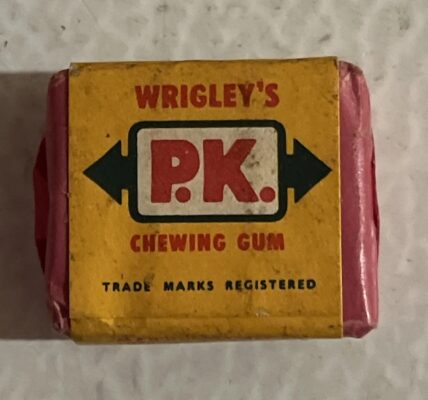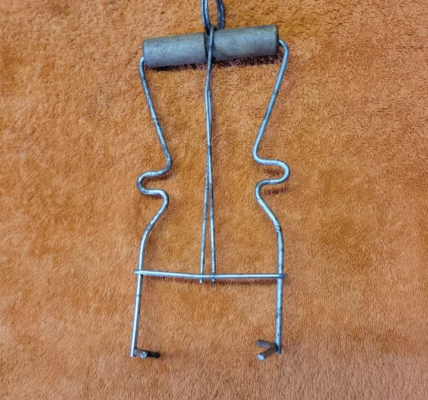Remember those old-school can openers that your grandmother used to have, the ones with the signature swing-away mechanism? That, my friends, is the legendary Swing Away can opener, a true culinary icon that has earned its place in kitchens for generations. This vintage tool, with its simple yet innovative design, is a testament to the power of smart invention and classic appeal. It’s a kitchen gadget that has stood the test of time, and even today, it remains a prized possession for collectors and enthusiasts alike.
Let’s take a closer look at the history, design, and legacy of the Swing Away can opener and discover why it continues to be loved in kitchens worldwide.
The Birth of the Swing Away: Revolutionizing Can Opening in the 20th Century

Back in the early 1900s, opening a can wasn’t as easy as it is today. People had to use bulky and awkward tools that made the simple task of opening a can feel like a chore. That is, until the Swing Away can opener came along and changed everything. Introduced in the 1930s, the Swing Away was designed to bring convenience into the kitchen—a rare luxury at the time.
Its ingenious swing-away mechanism allowed users to puncture and open cans with ease, transforming the experience into a smooth, effortless process. Suddenly, what once required brute force and patience became a breeze. With a simple flick of the wrist, the Swing Away could glide through metal cans, making it a game-changer for home cooks and professional chefs alike.
Why the Swing Away Became a Kitchen Staple
As modern kitchen conveniences began to flourish in the mid-20th century, the Swing Away can opener quickly gained popularity. Unlike many kitchen gadgets that are complicated or fragile, the Swing Away stood out for its reliability and simplicity. It didn’t need electricity or complicated mechanics—just good, old-fashioned human power and a smart design.
Its sturdy construction and intuitive use made it a favorite in households of all sizes. From cozy kitchens in small homes to busy restaurant settings, the Swing Away was a tool that everyone could rely on, regardless of their culinary expertise. It wasn’t just a tool—it was a kitchen hero, there to save the day when you needed that can of tomatoes or beans opened in a hurry.
The Vintage Appeal: Why Collectors Love the Swing Away
Despite the rise of electric can openers and more advanced kitchen gadgets, the vintage Swing Away can opener remains a beloved relic of the past. Its timeless design and unmatched durability have made it a sought-after item among collectors and culinary enthusiasts. But it’s more than just a functional tool—it’s a piece of history, a symbol of innovation from a simpler time.
Today, vintage Swing Away can openers are highly prized for their retro allure and nostalgic appeal. They evoke memories of family gatherings, home-cooked meals, and the comforting routines of kitchen life. For many, owning a Swing Away is like owning a piece of culinary history, a tool that has been passed down through generations and still works as efficiently as it did decades ago.
The Power of Simplicity: Why the Swing Away Endures
The enduring popularity of the Swing Away can opener is a testament to the power of simple, effective design. While many modern kitchen gadgets are packed with features and often require batteries or charging, the Swing Away is refreshingly straightforward. It doesn’t rely on technology; it relies on good engineering.
In fact, the Swing Away’s simplicity is its strength. Its uncomplicated mechanics mean that there’s little that can go wrong. No motor to burn out, no electronics to malfunction—just a sturdy handle, sharp cutting wheels, and a swing-away arm that makes quick work of any can. It’s this dependability that has allowed the Swing Away to remain relevant even in today’s tech-heavy world.
A Nostalgic Connection to Family and Tradition
For many people, the sight of a Swing Away can opener sparks a wave of nostalgia. It brings back memories of watching parents or grandparents use the tool to prepare family meals. The sound of the can opener working through metal, the feel of its handle, the anticipation of what’s inside the can—it’s all tied to the experience of home cooking and cherished family traditions.
The Swing Away represents more than just a kitchen gadget—it’s a symbol of connection. It reminds us of a time when kitchens were the heart of the home, where family meals were prepared with love, and where every meal was a shared experience. In this way, the Swing Away can opener continues to evoke a sense of warmth and comfort, making it a treasured item for those who appreciate the legacy of family cooking.
The Swing Away in Modern Kitchens: A Lasting Legacy

Even in today’s era of high-tech kitchen gadgets, the vintage Swing Away can opener still has a place. For those who appreciate the craftsmanship of well-made tools, the Swing Away offers a sense of authenticity that newer gadgets just can’t match. It’s a reminder of the value of longevity—how a tool that’s built to last can serve generations without ever going out of style.
Some people have embraced the vintage kitchen aesthetic, where tools like the Swing Away aren’t just functional but also serve as a design element. The sleek, metal construction and retro charm of the Swing Away make it a beautiful addition to any kitchen countertop, whether it’s a modern space or a rustic, farmhouse-style setting.
Conclusion: The Swing Away Can Opener—A True Kitchen Icon
The Swing Away can opener is more than just a kitchen gadget—it’s a true icon of culinary history. Its simple yet innovative design, its enduring popularity, and its nostalgic appeal have made it a timeless treasure. For decades, it has been a reliable tool in homes around the world, proving its worth time and time again.
Whether you’re using it to open a can for dinner tonight or keeping it as a collector’s item, the Swing Away can opener is a reminder of the enduring power of innovation and the timeless charm of classic design. Its place in kitchens, both past and present, ensures that its legacy will live on for generations to come.




